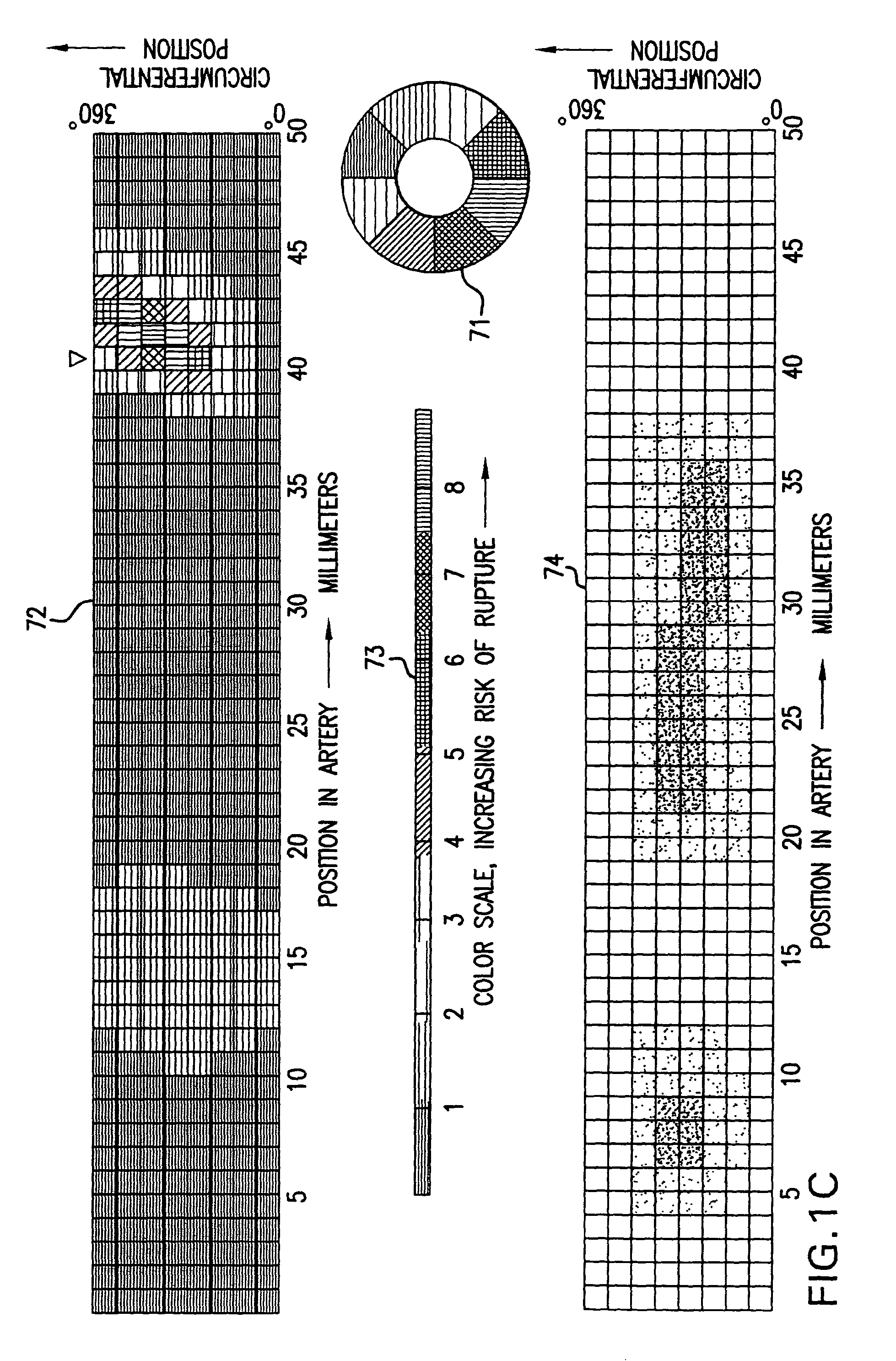Method and system for spectral examination of vascular walls through blood during cardiac motion
a vascular wall and spectral examination technology, applied in the field of spectral examination of vascular walls through blood during cardiac motion, can solve the problems of difficult to isolate the spectral response of the vessel wall or other structures of interest, the probe head is poorly controlled, and the treatment and/or analysis of the vessel wall through blood are complicated further, so as to improve the treatment effect of the vessel wall and improve the effect of the treatmen
- Summary
- Abstract
- Description
- Claims
- Application Information
AI Technical Summary
Benefits of technology
Problems solved by technology
Method used
Image
Examples
first embodiment
[0096]FIG. 5 shows the catheter providing for increased movement during operation.
[0097]The catheter head 58 includes a high density mass or weight 118 that is located away from the axis of rotation 116 for the catheter head 58. As a result, when the catheter 56 is driven to rotate, see arrow 110, the catheter head 58 traces an elliptical path 112. This elliptical path 112 brings the optical window 48 of the catheter head 58 into close proximity with the target 22. By timing the capture of the optical signal and assessment of the vessel walls with the point in time when the elliptical path 112 of the catheter head 58 brings the optical window 48 in proximity to the target area 22, the signal to noise is maximized.
[0098]As discussed previously, this rotation is sometimes combined with other simultaneous operations, as described previously, in which catheter head 58 is initially placed at the distal point of the vessel portion to be evaluated, and then pulled back through the vessel u...
second embodiment
[0099]FIGS. 6A and 6B show the catheter providing for increased movement during operation.
[0100]Referring to 6A, here the catheter head 58 includes right and left wings or fins 114A and 114B. These wings or fins 114A, 114B interact with the flowing blood 108 to cause the catheter head to move relative to the target area 22. This causes the optical window 48 to periodically move closer to the target area 22 to enable high signal to noise analysis of the target area 22 by reducing the pathlength through the blood 108.
[0101]In the specific embodiment, the wings 114A, 114B are angled relative to the centerline of the catheter head 58 as shown in FIG. 6B. Here the flowing blood 108 acts on the wings 114 to push the catheter head 58 in a direction that is orthogonal to the optical window 48, in the direction of the target area 22. Thus, as the flow rate of the blood 108 increases, the catheter head is moved closer to the target area 22.
[0102]Generally, the wings may be designed according ...
PUM
 Login to View More
Login to View More Abstract
Description
Claims
Application Information
 Login to View More
Login to View More - R&D
- Intellectual Property
- Life Sciences
- Materials
- Tech Scout
- Unparalleled Data Quality
- Higher Quality Content
- 60% Fewer Hallucinations
Browse by: Latest US Patents, China's latest patents, Technical Efficacy Thesaurus, Application Domain, Technology Topic, Popular Technical Reports.
© 2025 PatSnap. All rights reserved.Legal|Privacy policy|Modern Slavery Act Transparency Statement|Sitemap|About US| Contact US: help@patsnap.com



